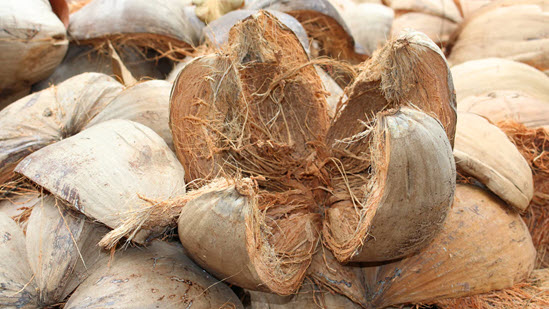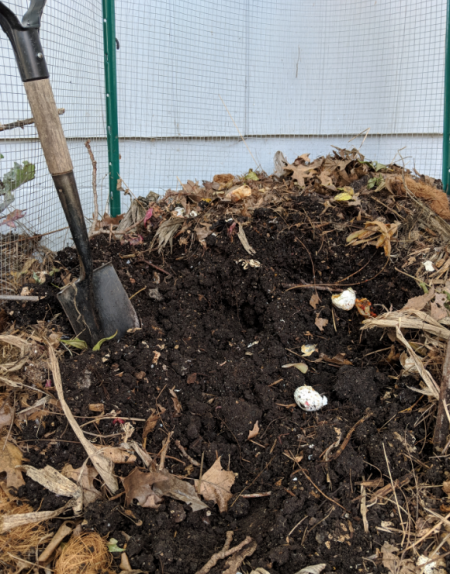Click below to listen to my 2 min. Garden Bite radio show/podcast: Peat-free options
Audio PlayerA couple of weeks ago I talked about the depletion of peat bogs and a growing movement to stop using so much of a resource that is not instantly renewable.

Today is about peat replacement options. Coconut coir aka coconut fiber is at the top of the list.
It is the fiber between the husk and outer shell of a coconut and a waste product of the coconut industry.

Coco coir can hold up to 10 times it’s weight in water. You buy it in various forms including bricks, blocks or chips. It’s also used very often as a liner for hanging baskets.

In addition to it’s ability to hold water and assist in aeration, coco coir is reusable and has a neutral pH. The minuses include added salt. If the processor of the coir is using salt water to rinse the product it can cause problems including plants NOT being able to take up water. Check the price, if it’s too good to be true then it was likely rinsed with salt water. Here’s more in-depth information from Trees.com on the different types and uses as well as how to store coconut coir.

Another option is perlite. It looks like styrofoam and can float around so moisten it so you don’t inhale it.
Perlite is made from expanded volcanic glass and is used to aerate soil which improves drainage. Mix it in with a 1 to 1 ratio. Here’s more in-depth information on perlite from Trees.com. Perlite adds “space” to your soil allowing more room for oxygen which helps to keep soil from compacting and allows for better drainage.

- Wood chips, pine bark or sawdust are also options that offer good drainage when mixed with soil and a good way to use the by-products for the wood industry.
- Leaf mold is great but it takes time. Tree leaves are a soil conditioner allowing for water retention and enhanced soil structure. It can also enhance a plant’s resistance to disease.
- Your home compost.

